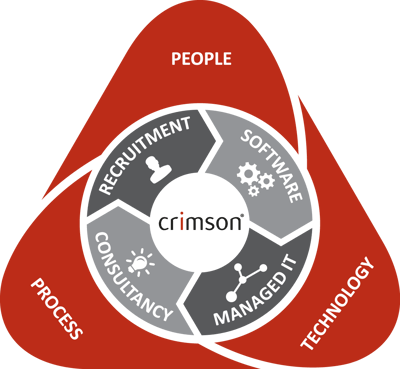Marginal Gains: Optimising Your Retail Technology Strategy
If you’re a CEO or CIO in the retail sector, it’s likely that you will constantly be concerned about the effectiveness and efficiency of your retail technology strategy.
You will be continually asking yourself;
“Is business demand outstripping IT supply?”
“How do my team get the strategy right first time ans deliver results more quickly, with predicable costs?”
“Are we spending enough of our budget on IT initiatives to enable growth?”
However, many of the CIOs I’ve worked with tell me that a number of factors can get in the way of addressing these key questions.
These include;
Legacy software or antiquated systems.
The large number of applications and links between them.
Misalignment between business departments and IT as to priorities.
An insufficient IT budget, a large proportion of which is spent ‘keeping the lights on’.
In-sufficient access to knowledgeable and skilled resources within their IT team, especially around transformation programmes.
Having worked alongside and supported the IT teams of major retail companies for more than 20 years, I have identified some steps that great retailers take to increase revenue generation, cultivate bottom line margins, and improve business processes:
*Disclaimer; Some of the steps outlined may seem ‘obvious’ ones to initiate but I have outlined them because failing to implement the simplest steps can lead to failing to achieve key business objectives.
1, Gather your company’s key stakeholders, involve all departments and explain the need for a cohesive  technology strategy that is aligned to business goals and objectives. CEOs and CIOs should do this together to ensure stakeholder buy-in.
technology strategy that is aligned to business goals and objectives. CEOs and CIOs should do this together to ensure stakeholder buy-in.
2, Arrange individual meetings with key representatives and influencers within each department and ask them what they believe are the IT inhibitors, potential cost savers, or growth generators within their areas.
Set the agenda beforehand and ensure the departmental Director leads preparation sessions prior the meeting. Don’t set any constraints and encourage everyone to think ‘cross functionally’. Ask stakeholders to prioritize their needs and bring their ideas to the meeting. Explain that ‘no ideas’ means no IT budget allocation – you reap what you sew.
Keep this stage pacey, you’re trying to gather wants and needs, not solutions. It all about getting the high level requirements list established for each department.
PS: Requirements are often suppressed if the departments worry about costs and timescales. Realism is good, suppression is not. Don’t set too many constraints in this process or you will not capture the truth.
3, Make sure your IT programme, project, or account managers attend the departmental review sessions and record all wants, needs, and desires. Nothing is too much trouble at this stage.
4, Recognize the importance of IT in modern retail. The IT Department is also a major player in the modern retail world; ensure you include the IT function as an equal in this process. Doing this will often capture, and highlight to the Board, the need to have “maintenance” projects in the company portfolio. Such projects consume time and money. Explain to the IT team that modern retail leaders take benefit from early adopter strategies and that 80% of the benefits can often be achieved through 20% of the efforts; imbed this thinking into everything you do.
IMPORTANT; don’t let IT just be an ‘order-taker’. Ask the IT department to volunteer ideas and contribute to business department discussions. A number of IT staff will have worked in competitor organizations and will know what good looks like.
5, Collate the findings from all departmental stakeholders into a central pack; including IT. Look for common themes and objectives across departments to identify potential programmes of work that will help break down silo thinking and create opportunities to align departments and processes. Some of your departments will have shared aims, so you will see opportunities to integrate systems and share budgets while achieving company objectives.
6, Collate the departments’ wish lists and provide a slide pack to show the board common themes, priorities, potential benefits. At this stage, you are trying to form a menu of options but a key factor will be time and cost. Don’t make the mistake of being cautious in establishing costs and timescales. The board understands the need for high level planning and prioritisation when all the facts are not known. Set your IT estimators the task of operating a Mouse, Dog, Elephant policy to time and money and tell them they have only 15 minutes to provide per item on the wish list. You are looking to establish the shape of the portfolio, not the final answer. Don’t forget to include the business resources in the estimates or your projects won’t work.
7, Discuss the first draft at board level and seek agreement on where to set the bar. Recognise that the work done so far will have resulted in a wish list that, if committed, would outstrip IT budgets, IT staff levels and will also consume un-acceptable levels of business people. When demand outstrips supply the in-evitable consequence is a queue. You now need to reach a board level agreement on what the priorities are.
Using the steps outlined above you are now in a position to make, board-led, informed decisions. Don’t let IT set the priorities, it is the board’s responsibility to rank the list, get the ruler out and draw to cut off line to define what will be done to what will be parked. This is usually an iterative process which will require co-operation and communication across departments.
8, When you have a reasonable level of agreement you can start more detailed planning on an agreed and prioritised list. You are now ready to start execution phases but remember that a Mouse, Dog, Elephant estimating technique was deployed in earlier stages so be prepared to accept that change will occur as detail emerges. Manage the portfolio via your Capex Committee (or equivalent).
9, Every year, repeat the process as part of your budgeting cycle but start early. Upon reaching the second year, it will be interesting to see if the projects that did not make previous year cut are still a priority. If not, why not? What can the board do to get better strategic alignment across the company?
This process will help avoid the phenomena of ‘he who shouts loudest’ when establishing your programme of work.
REMEMBER; this won’t work without CEO buy-in and get this before starting the journey.
As mentioned, these steps may seem obvious or even simplistic, but I have worked for more than 20 years to develop techniques to overcome the blockers that stand in the way of success. So believe me, taking all the steps is necessary, even vital, if you want to leave a lasting legacy of change that alters the trajectory of the organisation.
This process will help you to address all over the common problems mentioned earlier in this article and help your company to get the biggest ‘bang for your buck’.


